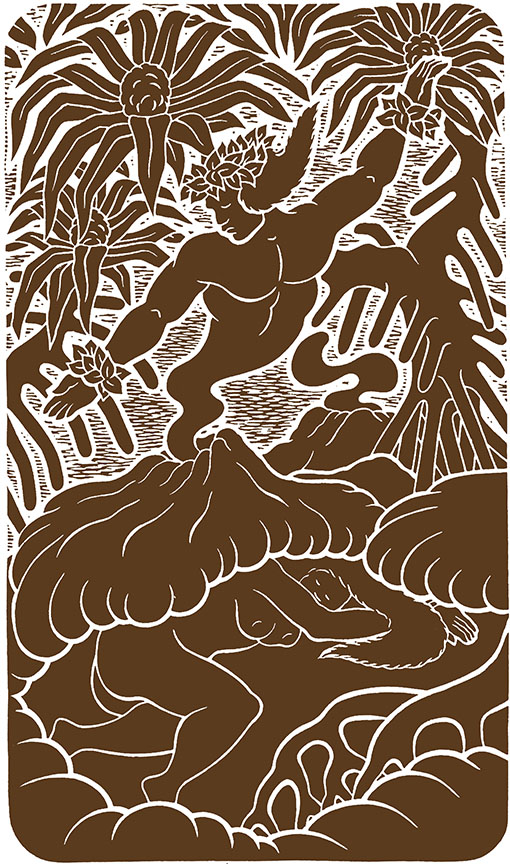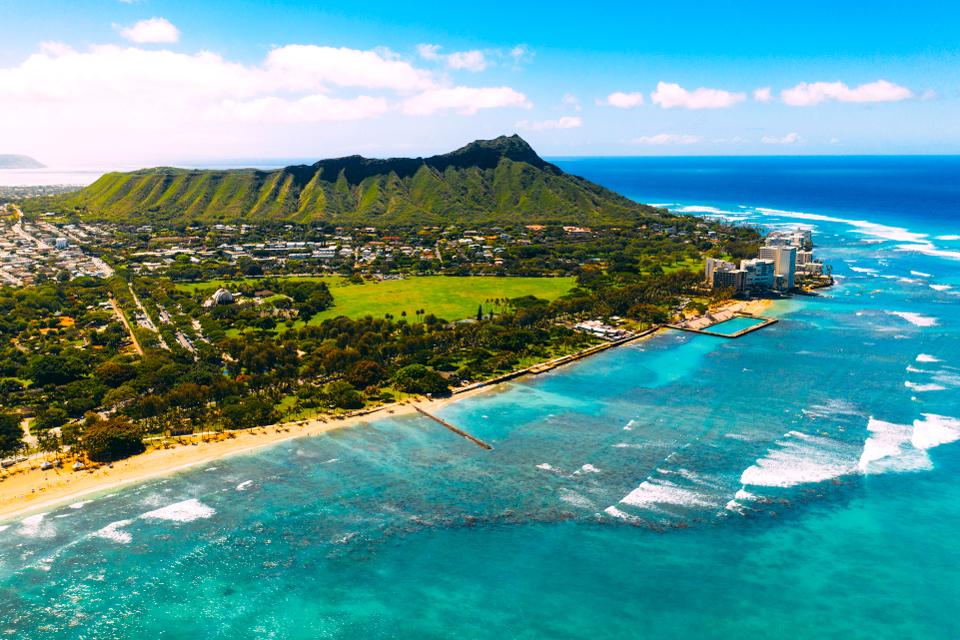
On the Island of Kaua‘i, Pele had been beaten and broken, left for dead by her sister Nāmakaokaha‘i. While utterly defeated, Pele was not dead, and departed from Kaua‘i continuing her journey east to find a new home.
Pele landed at Ka‘ena on the western tip of O‘ahu. Near the hill of Kapolei she struck her ‘ō‘ō , Pāoa into the ground, as she had done numerous times before, and struck water. Discouragement filled her soul and as she looked back towards Kaua‘i, her heart filled with sorrow and she wept for her loved one, Lohiau.
She walked through the wiliwili trees and reached Kuwalakai. Here she took her sister, Hi‘iaka, from her pā‘ū and made her way to the sea to gather limu (seaweed) from which she squeezed its juice and used it as drinking water.
After quenching her thirst, Pele decided she would stay the night in this place. She named the flower which grew there “Pā‘ū o Hi‘iaka” and fashioned a lei po‘o which she wore. That evening, Pele dreamt of her lover, Lohiau. This vision brought strength and courage to Pele and in the dusk of morning she hurried on her way.

Pele arrived to Moanalua, near Honolulu, where she dug a fire pit. The crater which she dug filled up with salt water and she called the place Āliapa‘akai (the salt marsh), or as the area is now known as Āliamanu or “Salt Lake.”
Traveling to the southernmost point of O‘ahu, Pele again struck Pāoa into the earth. Here, she dug and threw vast amounts of fire and rock. Yet again, her fires were drowned by the water she struck below. This was the birth of Lē‘ahi (aka Diamond Head).

At the bay of Hanauma, a canoe was being prepared for a trip. Pele greeted the men, and at the sight of her beauty they each fell to the ground.
Join us next month to see where Pele’s journey takes her next.
